Stowage SolutionsIn recent years, the availability of roof racks has exploded. Safari type racks, sport system racks, and a variety of other versions of this simple idea cropped up. In addition to the racks themselves, a plethora of stowage options exist for items that do not attach directly to the racks, like bikes. But once the rack is mounted, where do you put those sleeping bags, duffels, and sundry?junk? Most of these things are vulnerable to the elements, and all of them are a pain to strap on. Solutions for this problem range from spider web-like elastic nets, designed solely for stabilizing items, to space age containers costing half a grand. In between these solutions lie several good options, the most common being the soft stowage container.The ProductSoft stowage containers are basically highly evolved duffel bags. Most improve upon the soft containers that our parents used by incorporating modern, moisture-impervious materials, aerodynamic shapes, and construction techniques that thwart all that would infiltrate your?junk. One of the best soft-sided containers I have seen or used is Cabelas' Roof Top Carrier. Cabelas is widely known as the "world's foremost outfitter" of hunting, fishing, and outdoor gear. Seeing their 600 page full-color catalogue will make you believe they are not boasting. Fortunately, their gear and customer service matches their claim.I've shopped Cabelas' since my youth, and was well aware of their standards, so my expectations were high for the Carrier. The unit, a black 15 cubic foot model, arrived in what initially seemed to be a too-small box. The Carrier folds to a suprisingly small size, and weighs only a few pounds. This is allows it to be stashed away in the truck when not in use, saving the wind drag that solid stowage containers produce even when empty.
The Carrier's design is as intelligent as its materials and construction. The unit is essentially a rectangular fabric box with a lid that zips open with a big #10 two-way zipper on three sides. On the front side, where the lid attaches, an additional lid also attaches. The upper lid, which is better described as a cap, completely covers the Carrier's zippered lid, as well as the remaining three sides. With the straps in place, the cap/lid protects the zipper from wind-driven moisture and dust. The cap also adds a measure of protection from abrasion from low hanging branches. The zipper pulls are large, easy to hold, and will even accept a lock through their eyelets. Cabelas' logo is tastefully emblazoned on the lid's sides in a durable paint. Installation
One word of warning: Cabelas' advises that you not lift a loaded Carrier onto your roof. This is a moot point, however, because a fully stuffed Carrier is much too unwieldy to heave up that high. Capacity
Testing
The well thought out design of the bag plus the strap system resulted in no flapping during the months of driving we put it through. In fact, the one reservation we had about the design was a result of the extremely secure straps. Getting gear in and out of the Carrier frequently took some effort because of the stout cross configuration of straps and the dual lid design. Few other concerns arose, however users should be cautious with fuels stored in the Carrier due to possible heat buildup from the dark fabric. Security concerns may also be an issue if you leave your vehicle unattended for long periods of time. ConclusionSoft sided carriers offer distinct advantages over hard shell carriers (i.e., flexibility of shape, portability, and weight) while costing only 1/2 to 1/4 as much, and with few drawbacks (security, need for adjustment, slower entry). Consequently, for anyone looking to increase the cargo (i.e., junk) hauling ability of their off-roader, soft sided containers bear serious consideration. If you do decide that such a unit will fill your niche, take a hard look at the offerings from Cabelas. Their Roof Top Carrier, whether in the 10 or 15 cubic foot model, is a serious tool for extending the range of your rig. |
Follow @Off-Road

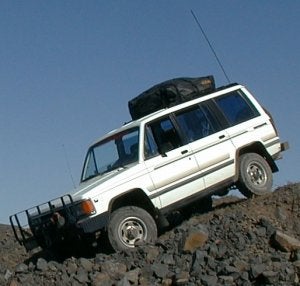
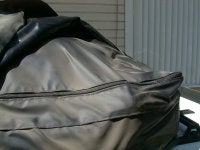
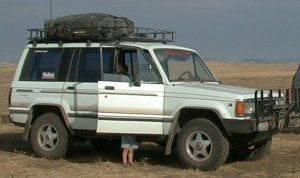
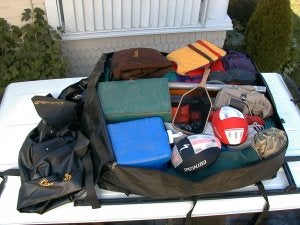
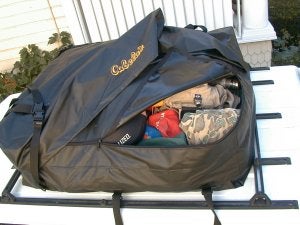

 Your Privacy Choices
Your Privacy Choices